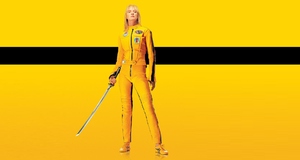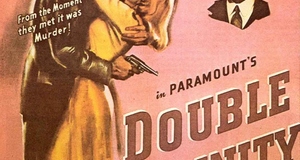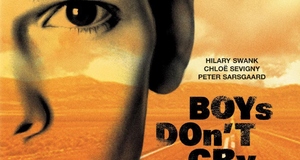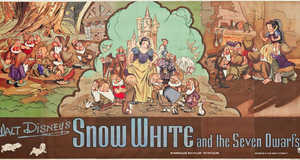Man as Image: Clark Gable, James Dean, and the Audience that Looked at ThemMan as Image, Woman as Bearer of the Look4The diversion from the "active/passive heterosexual division" between spectator and figure on screen (Mulvey, 1975, p. 11-2), allows Dean's persona to "accommodate[…] gay, straight, male, and female subject[s]" which helped him gain universal appeal amongst 1950s nonconformist youth culture (DeAngelis, 2001, p. 16; Cohan, 1997, p. 202). He remains a 'gay icon' as a result of the proliferation of the gay subculture from the 1970s onwards, a phenomenon Michael DeAngelis (2001) describes as "the gay appropriation of James Dean's persona [which] involved a negotiation of the boundaries between self and other" (p. 10-1), effectively the breaking down of the Mirror between spectator and star. This "appropriation" continues through the ongoing debate about Dean's real-life sexuality: several critics, as well as Dean's Giant co-star and close friend Elizabeth Taylor, claim that he was homosexual ("Elizabeth Taylor at the GLAAD Media Awards," 2000; Cartier, 2009, p. 110; Dyer, 1979, p. 61), while others discuss his possible bisexuality (Cohan, 1997, p. 254). The alignment of the gaze also deviates from the norm in a scene from It Happened One Night. The majority of the sequence, set at a motel where Peter Warne (Gable) and Ellie Andrews (Claudette Colbert) spend the night, is shot over-the-shoulder of Gable and aligns the spectator with the male gaze. However, there is a significant change to an angle that shows both characters from the same point-of-view before Gable starts undressing in front of Colbert.This allows the female gaze to penetrate the otherwise normative alignment and makes the eroticization of Gable as "sex object" possible (Fisher, 1993, p. 39). Nonetheless, Gable is "desirable … precisely because he [seems] … unattainable" (Mellen, 1978, p. 116). This is represented by the physical division created by the "Walls of Jericho," the blanket separating the two beds in the room. This blanket is implied to serve as protection for Colbert from Gable, the "Big Bad Wolf," but in fact is the diegetic manifestation of the Mirror, indicating Gable's isolation from the spectators. It has to be noted that the "active/male" gaze is never completely subverted in It Happened One Night (Mulvey, 1975, p. 11): Gable remains the "active" participant of the relationship all along. He consciously strips in front of a woman, right after stating that "[p]rying eyes annoy [him]," suggesting awareness of his own image as the "natural embodiment of desirable manhood" (Connelly, 2004, p. 39). As an eroticized man, Gable must remain active "to be kept in line with dominant ideas of masculinity" in the 1930s and to "[not] be marked explicitly as the erotic object of another male look" (Dyer, 1982, p. 66; Neale, 1983, p. 8). In contrast, Dean's passive vulnerability, signified by the bloody cuts on his naked torso in Rebel Without a Cause, compares him to Mulvey's (1975) "passive/female" object of the gaze (p. 11). He represents the "sexually threatened heroes of the fifties" (Mellen, 1978, p. 117). Both stars' immense popularity, in spite of their clashing images, was possible because of the ideological change in attitudes towards masculinity between the 1930s and 1950s. By the '50s "the assumed definitions of the male sex role were challenged" and the "vulnerability of the … screen male [displayed by Dean; author's note] became … desirable" (Mellen, 1978, p. 192-3). Death Becomes HimA look at the two stars' deaths, and fans' reactions to them, further exemplifies the difference in Gable's and Dean's relationships with audiences. A 1960 Life magazine article describes Gable's co-stars mourning his "parodically masculine" death – heart attack, presumably resulting from over exhaustion and heavy alcohol consumption (Fisher, 1993, p. 50) – and depicts his funeral as a private ceremony where he was honored for his military service in the Second World War ("Clark Gable is Dead," 1960, p. 93, p. 96). Gable remains on the other side of the Mirror even in death, part of a secluded, deified star system, laid to rest not as ordinary men but as a war hero. Comparatively, the ambiguities needed for Dean's image to appeal to a wide range of people are maintained as a consequence of his untimely death in a car accident. Dean "[will] forever remain a boy in fans' memories," which freezes his image in its Lacanian state of infancy, his identity open for "appropriation" (Cohan, 1997, p. 253; DeAngelis, 2001, p. 10). The "delirium" over his death affected his fans en masse and led to "the Dean cult," depicted, for instance, in Kenneth Anger's Scorpio Rising (1964) (Goodman, 1956, p. 75, p. 79). The "unresolvable … image" left behind by the dead star prompted Dean's fans to request items that belonged to him from his studio (Ellis, 1992, p. 100; Goodman, 1956, p. 75). The most sought-after piece from all the existing Dean memorabilia has been, and remains, the iconic red jacket he puts on in front of the mirror in Rebel Without a Cause. Because it appears at that specific moment of the film, the jacket becomes symbolic of Dean's search for identity and a means to recreate his persona. This is illustrated by Jack DeWitt's poem "James Dean" (2008) as the speaker expresses his identification with Dean: I had just seen James Dean This can be contrasted to Rick DeMarinis' poem "You, Clark Gable" (1969). DeMarinis shows that Gable's image was an exemplary ideal, by expressing that he was someone "we [the fans] came to believe": Not the miles of Confederate Dead, The clear delineation of the subject positions "we" (l. 7) – the fans – and "You, Clark Gable" –"you, Clark" (l. 4), "your grin, Clark" (l. 22) – illustrates Gable's detachment from audiences; the "You" of the title becomes a Mirror-surrogate, similarly to the "Walls of Jericho" in It Happened One Night.Continued on Next Page » Suggested Reading from Inquiries Journal
Inquiries Journal provides undergraduate and graduate students around the world a platform for the wide dissemination of academic work over a range of core disciplines. Representing the work of students from hundreds of institutions around the globe, Inquiries Journal's large database of academic articles is completely free. Learn more | Blog | Submit Latest in Film & Media |


















